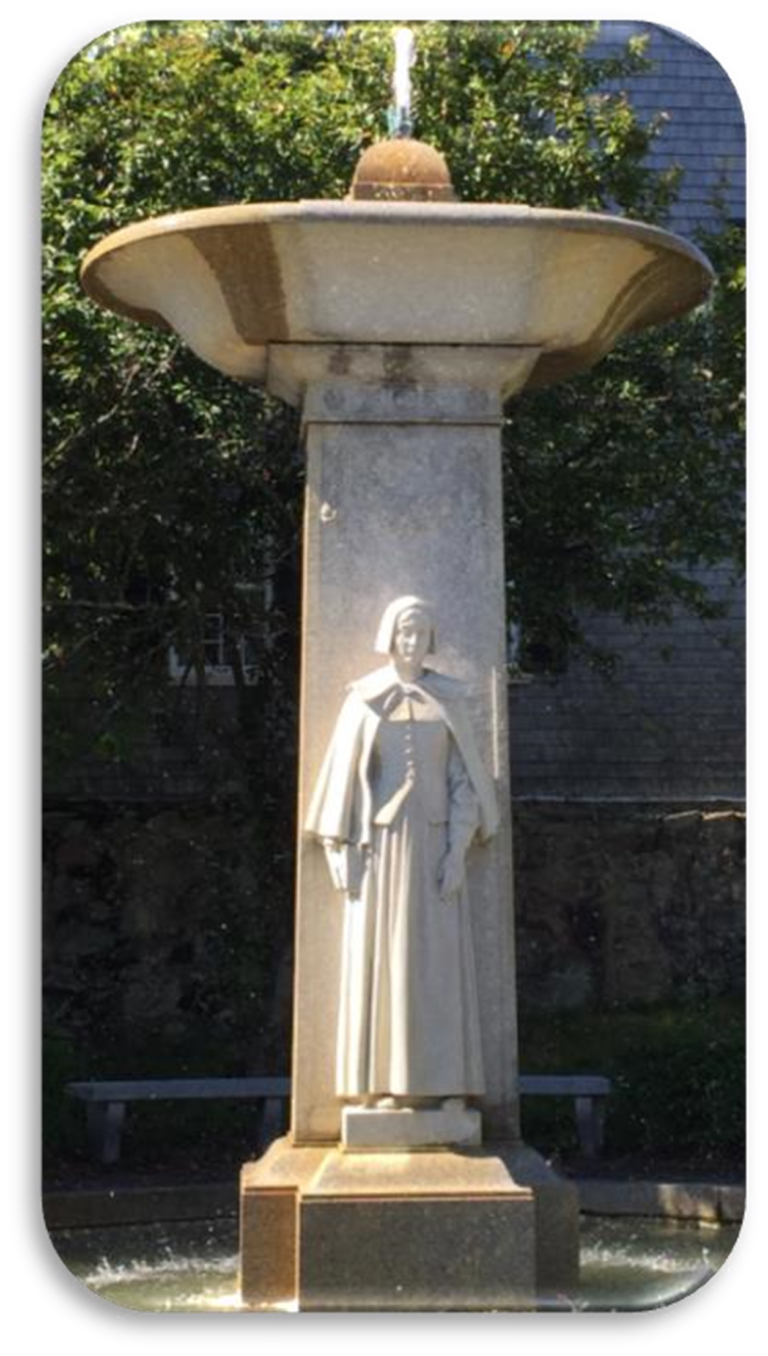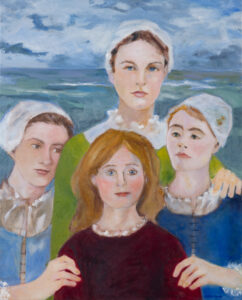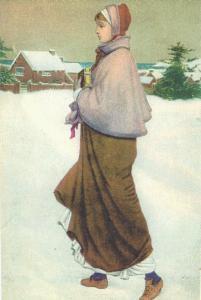
Women of the Mayflower
When the Mayflower left Plymouth, England on September 6, 1620, eighteen of its passengers were adult women. Most we know by name, but William Bradford’s list of Mayflower passengers records a few merely as “his wife,” in relation to their husbands.
While the written sources left behind by the Pilgrims make little mention of these eighteen women compared to their more well known husbands, from what we do know we can begin to piece together their lives.
Some women on the Mayflower had previously been living in Holland as part of a separatist congregation, while others remained a part of the Church of England. Some traveled ahead of children they hoped would join them later, some came with their entire family, and three were pregnant when they boarded the ship. And by the end of the Pilgrims’ first year in New England, all but four had died.
In 1607 and 1608, members of a separatist congregation which included many eventual Mayflower passengers, attempted to leave England for the Netherlands, where other like-minded religious dissenters were already living. During the second of these attempts, the women and children were delayed in meeting their group, while the men already at the appointed rendezvous boarded the ship waiting to take them to the Netherlands. Before the women could join with the rest, the ship’s master “espied a great company, both horse and foot, with bills and guns and other weapons” coming to apprehend the fleeing Separatists. The fearful ship’s master sailed away with only the men who had already boarded, leaving behind “their wives and children which they saw thus to be taken.” (Bradford)
Those apprehended were shuffled from place to place and “from one justice to another,” since “to imprison so many women and innocent children…seemed to be unreasonable.” (Bradford) They could not return home, as many families had already sold their houses in anticipation of going to the Netherlands. The women and children were “conveyed from one constable to another,” but ultimately “they were glad to be rid of them in the end upon any terms, for all were wearied and tired with them.” (Bradford) Eventually these families were reunited, and after spending about a dozen years in Holland, many made an even more difficult journey aboard the Mayflower.

The Mayflower was already overcrowded, as it took on passengers from the leaky ship Speedwell, which was to accompany it to New England. But amongst the approximately 100 passengers, there were three pregnant women, one of whom gave birth during the ship’s Atlantic crossing. Elizabeth Hopkins, traveling with her husband, two stepchildren, and daughter, gave birth to her son Oceanus during the voyage.
While the Mayflower was anchored off the coast of Cape Cod, Susanna White gave birth to a son, who was “born a-shipboard.” (Bradford) Mourt’s Relation, which was probably written in part by Susanna’s future husband Edward Winslow, says of the birth, “it pleased God that Mistress White was brought a-bed of a son, which was called Peregrine.” Shortly after the Mayflower arrived in Plymouth Harbor, on December 22 Mary Allerton also “was delivered of a son, but dead born” (Mourt’s Relation).
The winter following the Mayflower’s arrival proved to be a deadly one – roughly half of the ship’s passengers and crew alike died during the ensuing months. Of the eighteen women who began the journey, only five (Susanna White, Eleanor Billington, Elizabeth Hopkins, Katherine Carver, and Mary Brewster) were alive by the spring of 1621. Of these 5 women, Katherine Carver, wife of Plimoth’s first governor John Carver, would not live to see the year’s end. William Bradford writes that John Carver died in April 1621, and Katherine “his wife, being a weak woman, died within five or six weeks after him.”

About a year after the arrival of the Mayflower, the ship Fortune reached Plimoth bringing more settlers in November 1621. Amongst its passengers there were only two women, meaning this small contingent of adult women were often spread quite thin between the colony’s domestic duties. William Bradford recounts that Plimoth’s women did household work not just for their own families, but for others in the town as well. This was much to the dismay of some of their husbands, as Bradford writes that “for men’s wives to be commanded to do service for other men, as dressing their meat, washing their clothes, etc… neither could many husbands well brook it.” There was work to be done outside the home too, for Bradford continues to say that the women also went out to the colony’s fields, and “took their little ones with them to set corn.”
The women of the Mayflower courageously left their homeland and traveled the vast Atlantic Ocean during storm season. These resolute women survived the illnesses of the first winter, accepted responsibilities of raising the orphaned children of fellow passengers, prepared homes, harvested crops and worked alongside new Wampanoag friends.

